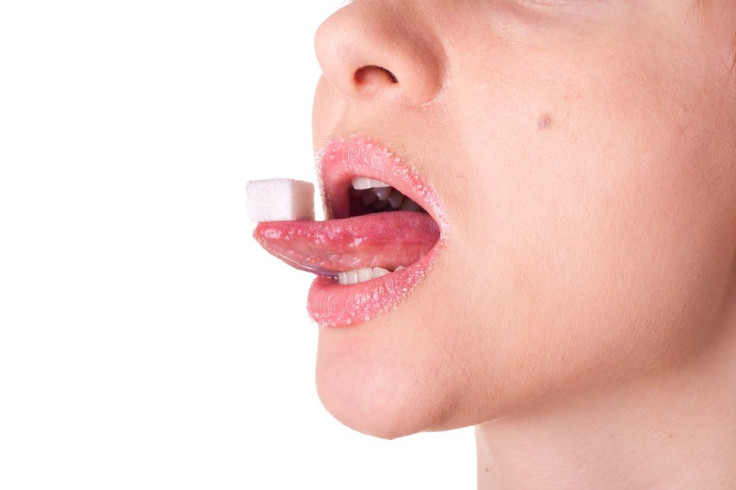This Is Your Brain On Drugs: The Truth About Where LSD Trips Take Your Mind And Body

With the power to alter perceptions, distort visual judgments, sensations, moods, and feeling, it’s no surprise LSD is the most commonly used hallucinogenic in the world. It’s often experimented with in teenage years, but what are its effects on the mind and body during a trip and long after its potency wears off?
Lysergic acid diethylamide, better known as LSD, is a psychedelic, hallucinogenic drug that was first synthesized in 1938 by Swiss chemist, Albert Hofmann. After accidentally absorbing a small amount of the drug through his fingertips, Hofmann became the first of many humans to experience its impressive mood-changing abilities.
“At home I lay down and sank into a not unpleasant intoxicated-like condition, characterized by an extremely stimulated imagination. In a dreamlike state, with eyes closed (I found the daylight to be unpleasantly glaring). I perceived an uninterrupted stream of fantastic pictures, extraordinary shapes with intense, kaleidoscopic play of colors,” Hofmann described in his 1980 autobiography, after he was brought home by his lab assistant.
LSD was originally developed to act as a respiratory and circulatory stimulant. It’s an odorless, colorless, and tasteless liquid that’s usually ingested by placing small tabs of LSD-soaked papers beneath the tongue. A droplet-like dosage is also placed onto sugar cubes, eaten in gelatin, or tablet. The effects kick in 30 minutes and can last up to 12 hours. Its long symptomatic effects are why it’s earned the nickname “acid trip.”
Researchers say they still don’t know exactly how the hallucinogenic drugs, such as LSD work in the brain. After UK researchers used functional magnetic resonance imaging (fMRI) to study the live brain activity of 30 hallucinogen users, they found the brain regions that are responsible for constraining consciousness are turned off, giving birth to a free flow of thought. What they do know is that the increase in brain activity, which causes the overactive imagination that many users report, is caused by the serotonin receptors, the brain’s key chemical messengers.
There are 15 different serotonin receptors, but LSD specifically activates the 2A subtype (5-HT2A). The HT2A receptor is involved in cognitive processes in the prefrontal cortex, which controls a person’s impulsiveness. Hallucinations aren’t only from the over-stimulation of serotonin, but a combination of effects are thought to be at play.
LSD has a similar structure to a chemical in the brain that mimics psychosis, which is responsible for the altered sensory and perception, uncontrolled memory retrieval, and other indescribable images and emotions. Some believe that the chemical can become lodged inside the spinal cord for the rest of a person’s life, which could cause the flashback episodic trips that some users report having experienced. Anywhere, without warning, another hallucinatory trip could take place that has been reported to last a few minutes or a few hours.
Permanent hallucinations are a possible and life-altering effect of the drug’s use. It was first described in 1955 but was then recognized as Hallucinogen Persisting Perceptive Disorder. It’s considered to be a complex hallucinogen-induced psychosis with problematic drug therapy and treatment, which ultimately means there’s no cure and subsiding symptoms are unpredictable and, in some cases, never occur.
The drug is also infamously known for its “bad trips,” which gives some users feelings of panic, confusion, sadness, and scary images. It’s nearly impossible to predict who will experience a good trip and who will experience a bad trip, but every person will experience physical bodily changes. Dilated pupils, increased heart rate and blood pressure, trembling, uncontrollable shaking, sweating, sleeplessness, and loss of appetite are all frequently reported effects.
Hofmann experienced a bad trip once while experimenting with his lab-born concoction. April 19, 1943 would be known as “Bicycle Day,” when Hofmann began to perform self-experimentations on himself by intentionally ingesting LSD. He decided to take another look at the powers of this new chemical, and during the first of his experiments, he rode a bicycle and had such a bad experience he thought the drug had poisoned him into an insane state.
"A demon had invaded me, had taken possession of my body, mind, and soul. I jumped up and screamed, trying to free myself from him, but then sank down again and lay helpless on the sofa. The substance, with which I had wanted to experiment, had vanquished me. It was the demon that scornfully triumphed over my will," Hofmann wrote.
The United States became interested in the clinical potential LSD had for psychiatric treatments. By the mid-50s, LSD research was conducted in American medical centers where they treated patients who suffered personality disorders. It was given to hundreds of painters, writers, composers, and failed alcoholics who reported positive mind-expanding effects and a 50 percent cure rate for alcoholism.
It wasn’t until 1966, when California declared LSD an illegal substance, that the rest of the world banned the drugs recreational and therapeutic uses. But, like every illegal drug, there has always been an underground market for it with secret labs recreating Hofmann’s original recipe. The National Survey on Drug Use and Health reports that roughly 200,000 people use LSD for the first time in the United States each year, but use has been on a steady decline since 2002.



























